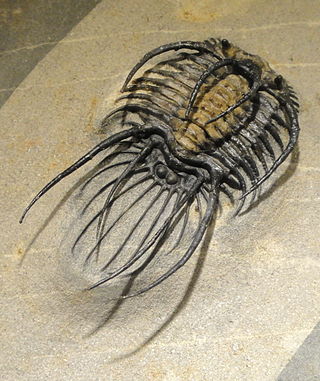
The Cymothoidae are a family of isopods in the suborder Cymothoida found in both marine and freshwater environments. Cymoithoids are ectoparasites, usually of fish, and they include the bizarre "tongue-biter", which attaches to a fish's tongue, causing it to atrophy, and replaces the tongue with its own body. Ceratothoa oestroides is one of the most devastating ectoparasites in Mediterranean aquaculture. Around 40 genera and more than 380 species of cymothoid are recognised. Species of the Cymothoidae are generally found in warmer waters and rarely in the cool and cold climates.

Dictyocha is a genus of silicoflagellates, marine photosynthetic unicellular protists that take the form of either flagellates or axopodial amoebae. Described by Ehrenberg in 1837, Dictyocha contains many important species of the marine phytoplankton, some of them responsible for algal blooms that are toxic to fish.
Actinoposthiidae is a family of acoels.

Proporidae is a family of acoels.

Isodiametridae is a family of acoels.
Anomocaridae is a family of trilobites, containing the following genera:

Ptychopariidae is a family of trilobites, containing the following genera:

Odontopleurida is an order of very spinose trilobites closely related to the trilobites of the order Lichida. Some experts group the Odontopleurid families, Odontopleuridae and Damesellidae, within Lichida. Odontopleurids tend to have convex, bar-shaped cephalons, and lobed, knob-shaped glabella that extend to, or almost to the anterior margin. Many, if not almost all odontopleurids have long spines that are derived either from the margins of the exoskeleton, or from granular or tubercular ornamentation, or both. Many odontopleurids are so spinose so as to be described as having "spines on (their) spines." Odontopleurids have 8 to 13 thoracic segments, with Odontopleuridae odontopleurids having no more than 10, and Damesellidae odontopleurids having no more than 13. The pygidium tends to be very small, and invariably has long spines emanating from it in all known genera.

Damesellidae is a family of odontopleurid trilobites found in late Middle to Late Cambrian marine strata, primarily of China. Damesellids are closely related to the odontopleurids of Odontopleuridae, but are not nearly as spinose, nor possess spines as exaggerated as Odontopleuridae. Like Odontopleuridae odontopleurids, damesellids have broad, bar-shaped cranidia with ledge-like borders. Damesellidae may represent transitional forms between more primitive, possibly ancestral ptychopariids and more advanced odontopleurids.

Clytus rhamni is a species of round-necked longhorns belonging to the family Cerambycidae, subfamily Cerambycinae.
Mesnilius is a genus of flies in the family Tachinidae.

Dimarcusidae is a family of triclads found mostly in freshwater habitats of caves, although at least one species, Rhodax evelinae, occurs in surface waters. Currently the family contains only seven species distributed in five genera, although the total number of species is thought to be much higher.

Acotylea is a suborder of free-living marine turbellarian flatworms in the order Polycladida.
Agapanthia kindermanni is a species of beetle in the family Cerambycidae. It was described by Pic in 1905. It is found in Turkey, including Hatay Province, İçel Province, Adana Province and Osmaniye Province.
Hozbeka is a monotypic moth genus in the family Oecophoridae erected by Hüseyin Özdikmen in 2009. Its only species, Hozbeka anomala, was described by John Frederick Gates Clarke in 1978. It is found in Chile.
Dorcadion glabrofasciatum is a species of beetle in the family Cerambycidae. It was described by Karl Daniel in 1900. It is known from Turkey.

Gymnosomatini is a tribe of bristle flies in the family Tachinidae. There are more than 30 genera and 200 described species in Gymnosomatini.
Chileana is a genus of soil centipedes in the clade Linotaeniidae and family Geophilidae found in southern Chile. It currently has only one species, C. araucanensis. Females of this species are about 30mm long, with a pale yellow body and a red head; bearing 12–15 pleural pores; long, tapering antennae with sparse basal sections and rather hairy distal sections; and a labrum with four median tubercles bearing a few cilia on the sides. Males have 10 pleural pores, thick ultimate legs armed with claws, and 43 leg pairs.
Kirkayakidae is a family of millipedes belonging to the order Chordeumatida. This family was formerly known as Altajellidae. Adult millipedes in this family have 28 segments rather than the 30 segments usually found in chordeumatidans.
Brasilomyia is a genus of flies in the family Tachinidae.










